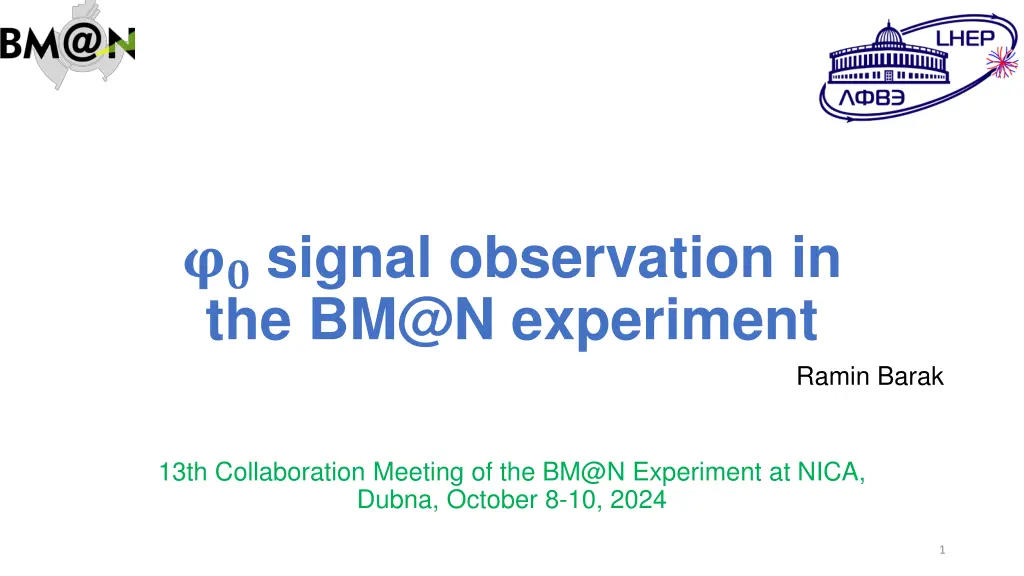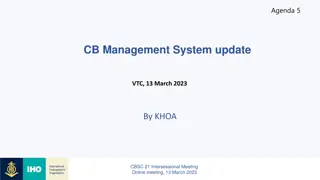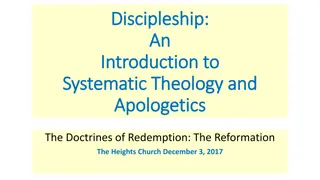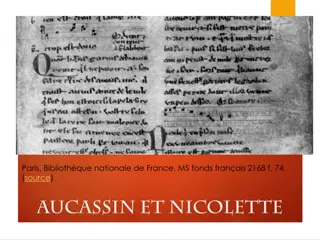
Observation of Phi Meson Signal in BM@N Experiment at NICA
"Explore the observation of the Phi meson signal in the BM@N Experiment at NICA, studying nuclear matter at extreme density and temperature through collisions of heavy relativistic ions. Discover the formation of the Quark-Gluon Plasma and the goal to analyze experimental data for further insights and comparisons with theoretical models."
Uploaded on | 1 Views
Download Presentation

Please find below an Image/Link to download the presentation.
The content on the website is provided AS IS for your information and personal use only. It may not be sold, licensed, or shared on other websites without obtaining consent from the author. If you encounter any issues during the download, it is possible that the publisher has removed the file from their server.
You are allowed to download the files provided on this website for personal or commercial use, subject to the condition that they are used lawfully. All files are the property of their respective owners.
The content on the website is provided AS IS for your information and personal use only. It may not be sold, licensed, or shared on other websites without obtaining consent from the author.
E N D
Presentation Transcript
??signal observation in the BM@N experiment Ramin Barak 13th Collaboration Meeting of the BM@N Experiment at NICA, Dubna, October 8-10, 2024 1
Introduction Collisions of heavy relativistic ions allow us to study nuclear matter at extreme density and temperature. At sufficiently high temperature and energy density, the so-called Quark-Gluon Plasma (QGP) is formed [1]: Formation of strange particles. Theoretical models offer different descriptions [2],[3]: New experimental data is needed for clarification. [1] Kapishin.M, Studies of baryonic matter at the BM@N experiment (JINR). Nuclear Physics A 982 (2019) 967 970. [2] J. A. et al Nucl. Phys., vol. A 757, pp. 102 183, 2005. [3] K. A. et al Nucl. Phys., vol. A 757, pp. 184 283, 2005. 2
Goal Observation of ?0signal in the MC and experimental data. 3
Data Experimental data obtained in the physical session at the beginning of 2023 with a beam energy of 3.8 AGeV, a CsI target and Xe beam. Dubna Cascade Model - Statistical Multifragmentation Model (DCM-SMM) and BOX Monte Carlo generators were used to model the data. About 0.8 million Monte Carlo and 22 million experimental events were analyzed. 4
Data processing procedure Reconstruction of particle tracks was carried out. Mathematical algorithms were developed and implemented to search for the ?0 ?++ ? decay: shuffling pairs of particles with different signs calculation of invariant mass imposing a number of geometric restrictions (4) on the parameters of each pair PV primary vertex. Path the distance traveled by ?0 from the primary vertex to the point of its decay. DCA0 the distance between the primary vertex and the projection of momentum of ?0. DCA1 the shortest distance from ?+to the vertex. DCA2 the shortest distance from ? to the vertex. DCA12 the distance between ?+and ? at the decay point of ?0. Event topology 5
Results MC EXP Efficiency = 0.44 %
Conclusion and future work Phi meson signal was observed in both MC and experimental cases. Put more stringent constraints on certain cuts and more lenient ones on others. Increase the number of analyzed events in order to improve the results regarding experimental data. Derive more realistic values for kinematic parameters by means of other MC generators (UrQMD, PYTHIA). Compare MC results with experimental ones. Perform phase space analysis. 7
Backup Backup 8
Cuts MC: EXP: 0.0 cm <= path <= 5.0 cm 0.0 cm <= dca12 <= 2.0 cm 0.0 cm <= dca0 <= 1.0 cm 0.15 ???? 0.7 ??? -2.5 ??? 0.0 cm <= path <= 1.0 cm 0.0 cm <= dca12 <= 1.0 cm 0.0 cm <= dca0 <= 0.05 cm 0.0 ???? 0.0 ???? ??<= mass_squared_ +<= 0.35 ???? ?<= momentum_ +<= 2.5 ??? ?<= momentum_ -<= -0.7 ??? ??<= mass_squared_K+<= 0.75 ???? ??<= mass_squared_K-<= 0.75 ???? ?? ?? ? ?? ?






















